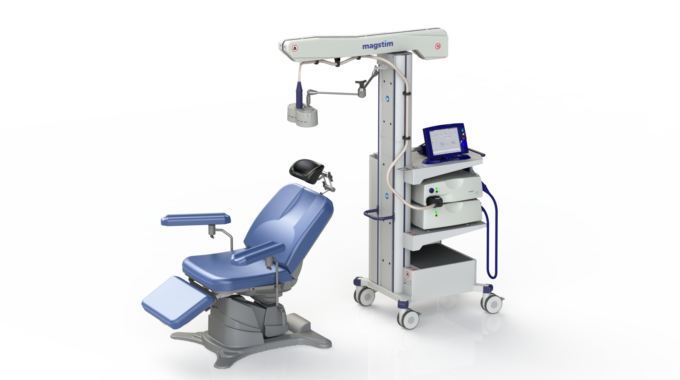
Theta Burst rTMS
rTMS is a non-invasive procedure which is indicated for the treatment of Major Depressive Disorder in adult patients who have failed to achieve satisfactory improvement from prior antidepressant medication in the current episode.
Theta Burst rTMS is a newly developed rTMS protocol which achieves the same results as traditional rTMS protocols in a significantly shorter time.
This page contains resources provided to us by Magstim, as well as some answers to frequently asked questions about rTMS at The Linden Medical Centre.
Downloads
rTMS Frequently Asked Questions
What is rTMS
Repetitive transcranial magnetic stimulation uses strong magnetic fields to alter the electrical events that occur within the brain. When treating depression, magnetic fields are focused on the left pre-frontal cortex which is the area of the brain responsible for our emotions.
How does rTMS work?
rTMS stimulates nerve cells in the region of your brain responsible for mood. This can activate regions of the brain that have decreased activity in people with depression.
Is rTMS covered by healthcare?
Coverage varies by province, but in Saskatchewan, rTMS treatments are fully covered by your Saskatchewan healthcare. TMS is not covered by Alberta Health but may be covered by some third-party insurance providers. We can provide you with a cost breakdown to send to your insurance company.
Who can be treated with rTMS?
rTMS treatments are ideally given to patients who have not responded well to traditional antidepressant medications. Talk to your family doctor, or your psychiatrist to find out if rTMS is the right treatment for your depression symptoms.
Who can't be treated with rTMS?
There are not many contraindications or limitations with rTMS. Patients with a history of epilepsy, patients with metal implants in and around their head, as well as patients with cardiac pacemakers may not be eligible to receive this treatment.
Is rTMS similar to ECT?
While both are used to treat depression, ECT and rTMS are very dissimilar treatments. ECT requires hospitalization, general anesthetic, and has a greater risk of side effects. rTMS is an outpatient treatment performed in a doctors office. It is non-invasive, and you can drive yourself home after your treatment. rTMS however is shown to be not as effective as ECT.
How long will it take to complete my treatment?
A typical course of rTMS treatments is comprised of 30-40 daily sessions. Frequency is then tapered. Maintenance treatments are individualized, and frequency can range from weekly to monthly.
For most people, an rTMS session will only last 3 minutes. Your initial session will include the mapping procedure which can take anywhere from 15 minutes to an hour.
Is rTMS safe?
With nearly to three decades of medical research, rTMS is generally considered to be a safe procedure. A study conducted by MagStim with over 10,000 treatments, showed the most common side effects to be mild muscle tension, and/or headaches immediately after an rTMS session. If headaches are experienced, they typically lessen, over the course of the treatments, as the patient becomes more accustomed to rTMS.
